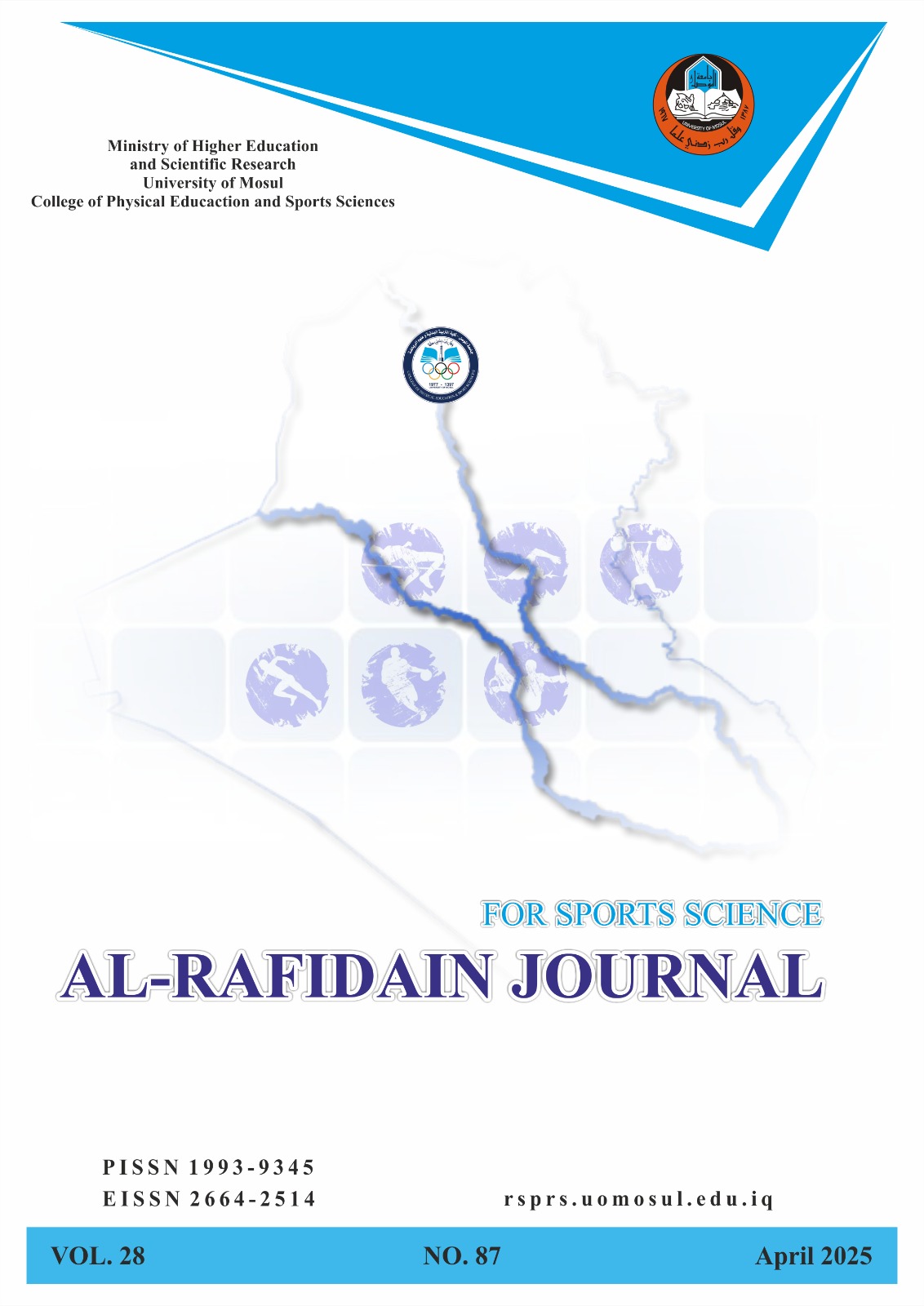Modified sit-up test based on power variables and some body measurements
Abstract
The study aims to:Employing power variables and some body measurements in the sit-up test.Identifying the contribution rates of the study variables in the sit-up test through the best regression model processed on the raw test scores.Establishing new standards and levels for the test in light of power variables and body measurements.The researchers used descriptive and correlational methods with a survey approach. The sample consisted of 79 advanced players from sports clubs in Nineveh Governorate for team sports (football, futsal, basketball, volleyball, andhandball). To obtain the required data, the researchers used the SPSS statistical package and a range of statistical methods, including mode, skewness coefficient, percentage, mean, standard deviation, Pearson's simple correlation coefficient, and multiple regression. The researchers reached several conclusions, including the following:The value of the displacement in a single ascent in the sit-up test was 90% of the trunk and head length.There was a significant correlation between the dependent variable (repetition) and the independent variables (power, mass, and trunk length) in the sit-up test.The study variables (power and body measurements) had contribution rates in performance (repetition) in the sit-up test.The researchers recommend and suggest the following:The necessity of including body measurement variables such as mass and body lengths in the sit-up test to extract power.Using the equation derived by the researchers to measure power in the sit-up test as listed below: Power equation in the sit-up test = [{mass 0.63 9.81}] [{(trunk and head length 0.9) (number of repetitions) (2)} {60}].Considering individual differences among test subjects by using the equation derived in this research, as well as using the standard levels designed in this study for the sit-up test to apply the principle of equal opportunities among test subjects, especially when results are close or equal in repetition criteria.The researchers recommend further studies on additional tests and the inclusion of power variables to cover all modifiable tests.






